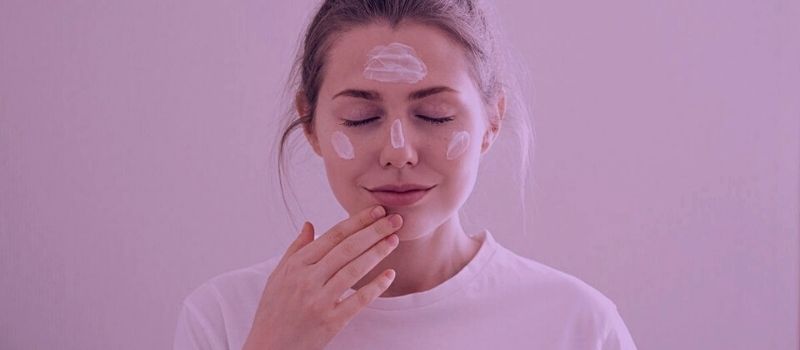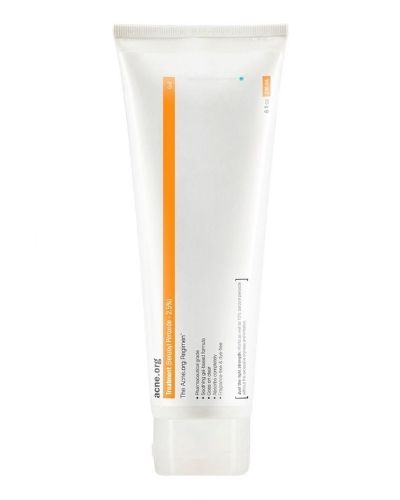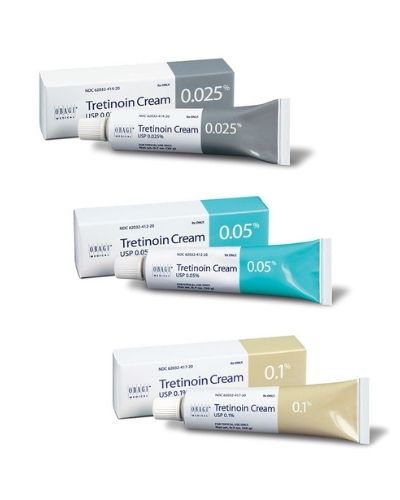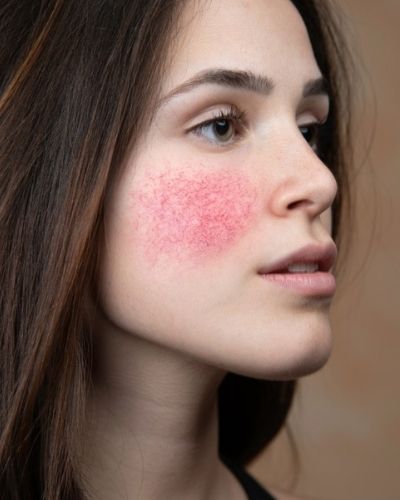There are so many ingredients in skincare products that can be mixed to target certain skin concerns and maximize skin benefits.
However, if there is one combination that should never be introduced to the skin, it has to be the one we will talk about today.
So, to answer your question: no, you can’t mix benzoyl peroxide with tretinoin unless you want to deal with some uncomfortable inflammation.
But if you want to read more about both ingredients, how they work, and understand why you can’t combine them in the same routine, continue reading.

How Does Benzoyl Peroxide Work?

Benzoyl peroxide is one of the most common ingredients in skincare products designed to combat acne breakouts.
It’s an industrial chemical that belongs to the peroxide family and has been used in medicine for nearly a century.
When it comes to skincare, benzoyl peroxide comes in many forms, and it’s an ingredient often found in cleansers, gels, and creams.
Benzoyl peroxide is a small molecule that travels deeper into the skin and carries oxygen in the pores to destroy the airless environment where acne-causing bacteria thrive.
However, although benzoyl peroxide is an amazing acne-fighting chemical, it’s best to incorporate it into your routine sparingly and slowly minimize use before eventually stopping it when acne is significantly reduced.
This is how you will give the healthy bacteria a chance to balance itself out and become commensal (neutral) or even useful for your skin instead of hostile towards its environment.
Some benefits of using benzoyl peroxide include:
- It has a quick action against acne.
- It is fairly well tolerable by all skin types, including sensitive skin.
- It’s affordable and easily accessible to everyone.
- It’s the best ingredient for body acne, including chest, back, and bum.
How Does Tretinoin Work?

Tretinoin is one of the most researched anti-aging and anti-acne treatments available in today’s market.
It’s a topical retinoid or a vitamin A derivative that helps speed up cell turnover (the rate that your skin produces new cells and sheds them from its surface.)
Abnormal skin cell turnover is one of the main causes of acne as this leads to blocked pores that form whiteheads and blackheads that would become inflamed as a result of our immune system’s reaction to a clog.
Tretinoin is incredibly effective in clearing up clogged pores; however, it has known side effects, including irritation which can leave you with red, sensitive, inflamed, and peeling skin.
Given that tretinoin is a powerful active ingredient on its own, you need to make sure you are not adding fuel to the fire by using skincare products that can potentially exacerbate these known side effects.
When using tretinoin, it is important not to use scrubs, exfoliating acids (especially AHAs), and enzymes, as well as harsh and drying cleansers that can make your skin burn and feel uncomfortable.
It is also a good idea to switch to a heavier and more occlusive moisturizer while using tretinoin and opt for a mineral sunscreen rather than a chemical one.
Some benefits of using tretinoin include:
- Brightened and evened out skin tone.
- Refined texture.
- Faded hyperpigmentation.
- Improved sun damage and discoloration.
- Reduced acne.
- Reduced fine lines and wrinkles.
Risks of Mixing Benzoyl Peroxide with Tretinoin

Benzoyl peroxide and tretinoin are both very efficient ingredients that can help get rid of acne and improve the skin’s appearance.
However, using them together doesn’t have any benefits as one would usually do a good job when used in a certain area.
For example, benzoyl peroxide can provide good results for mild to moderate acne on the face when used in concentrations of 2.5% to 5% and can address even more stubborn body acne in concentrations of 10%.
On the other hand, tretinoin comes in a small 20-45 grams tube, so it’s best to use it on the face and neck only.
You can use tretinoin on the body; however, you won’t be able to cover large areas without wasting too much product and having to constantly buy more.
But besides the lack of benefits, using benzoyl peroxide and tretinoin together actually comes with some potentially harmful effects on the skin.
Here are some side effects of mixing benzoyl peroxide with tretinoin:
Dryness and a damaged skin barrier
Dryness is the most common side effect of both benzoyl peroxide and tretinoin, so can you imagine what using both will do for your skin?
If the first thing that popped up in your mind were even more dryness and dehydration, you’d be correct.
When the skin is abnormally dry, it lacks protective components such as triglycerides, amino acids, fatty acids, ceramides, and antioxidants that nourish it and maintain a strong barrier.
RELATED: How to Get Rid of Dry & Flaky Skin?
Redness and irritation
A damaged skin barrier doesn’t only mean dryness and dehydration but also provides inadequate protection against the elements and pathogenic invaders.
This means that your skin is likely to become red and irritated even when doing the most mundane things, such as washing your face with plain water.
In addition to that, your skin will be more susceptible to damage from pathogenic invaders and unfriendly bacteria.
Intense peeling and shedding
And last but not least, combining benzoyl peroxide and tretinoin will definitely lead to intense peeling and shedding, especially around the mouth.
Both ingredients cause initial peeling and shedding, which typically lasts for a few days (for benzoyl peroxide) up to a few weeks (for tretinoin) until the skin gets used to the active ingredient.
However, mixing both ingredients in the same routine can intensify this occurrence and can sometimes trigger the skin to shed without stopping.
This was my personal experience after I mixed my Acne.Org 2.5% Benzoyl Peroxide treatment with my 0.5% tretinoin back when I didn’t know any better and wanted to get rid of the initial purge caused by tretinoin.
I counted on benzoyl peroxide to help reduce the active cysts and get me through the annoying tretinoin purge faster.
However, what ended up happening was my skin started to peel and shed for days to the point where even my Cicaplast B5 wasn’t helping anymore.
On top of all that, the dryness and irritation were almost unbearable, with my skin feeling like it was going to crack if I even tried to smile.
Both benzoyl peroxide and tretinoin are great ingredients that can help reduce acne and improve your skin’s appearance; however, using them together is definitely a no-go if you want beautiful and healthy skin.

My name is Simone and I am a certified skin specialist. I created this website to teach my readers how to take great care of their skin and I also like to occasionally share my honest opinions on skincare products I’ve tried. You can learn more about me here.
